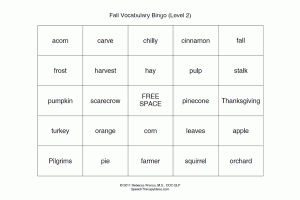
A metrolingual Japanese language: texting speak
This may be as far as blogging goes for this term and I am really excited that most of this week’s reading have brought me back to a fun, familiar place: Japan!! It feels like ages since I was there, but actually was less than a year ago, so much of this county’s culture has had after an influence on design and structure of my learning as a teacher, especially from an educational technology point of view. And now the language itself gets attention from renown sociolinguists. In its written form, Japanese has several formats that share some phonetic similarities, but are metaphorically worlds away from each other: hiragana (the traditional “female” syllabary), katakana (“male” syllabary used mostly for imported words), Kanji (Chinese characters) and Romanji (Roman alphabet characters), and the most entertaining written language Emoji (short for emoticon or smiley characters). Hard to believe for people struggling with the finer points of their home language, especially with the fuss being made over “selfie” being included in the Oxford English Dictionary, that most people in Japan are fluent in all five written forms. Gunther Kress, Louise Rosenblatt and Michel Foucault would all have a field day trying to explain the meaning-making processes occurring in this country (turns out that Foucault had quite a few wild nights out whenever he was there). Even without the reference to Alastair Pennycook’s theories, the development of this fifth writing system is very metro and very fitting for a country that some have called the Galapagos Islands of mobile technology. My junior high school students, many of whom have made their way to university by now, were highly receptive to these unique forms of communication, and yet struggled with English, mostly because it is a visually unappealing language. And this is despite the earnest effort of tens of thousands uncertified English teachers (like me) who “invade” the country and attempt to make English fun by continually playing vocabulary bingo games with their students. When I started out, I inherited from my predecessor a desk crammed with endless photocopied sheets of such bingo activities as below, and promptly recycled them all so that I could have useful teaching material for my classes.

Isn’t this a game for senior citizens?
Without giving too much away, my research project for this class will look at children’s access to virtual world via mobile phones, and a new national policy to ban mobiles from schools. In the wake of Canada’s recent legislation to curb cyberbullying by making it illegal to post someone else’s intimate image without one’s permission (isn’t that what Facebook and Instagram are all about?), Japan seems to be going down the same reactionary route. It was refreshing to read, and then hear from (via Skype) Ryuko Kubota as she identifies the neoliberal collusion as the cause of so much English testing in Japan, and the businesses that do well designing and selling back the idea that English is everything Japanese people need. Many of the people I met in Japan seem to have bought into the “big lie” that English is good for your career. Interestingly enough, quite a few Japanese English teachers (usually called Japanese teachers of English so as not to confuse us JET programme participants), had originally studied the language in order to become flight attendants and pilots, and teaching English was their fall-back job. Not sure what this says about the language demands for those wishing to enter the aviation field, as compared to the less demanding task of inspiring others to learn the language. There is definitely an interesting case study in the making to look into these secondary career choices, and if it means sending LLED grad students to Japan for a couple of terms to conduct research, I will happily accept this assignment – must mention this to Dr Kubota when she returns…
My wife has lots of exciting stories to tell about building her English language skills, and the places that it allowed her to go. It is significant that most of her English language learning happened outside of Japan, and her story is very similar to the code-switching ones reported in Harissi, Otsuji and Pennycook. While these examples are grounded in everyday experiences, they still beg the question “so what” and I suppose a close reading of these articles will reveal more about the identities people form through language. And speaking of identities, it was easy to agree with most of Pennycook’s call to arms for critical analysis, but reading him suggesting to others to be humble and then he quotes himself exclusively on the first page of his 2010 article seems at odds with what he proposes. Also, is he the man that gave the world “plurilingualism” which will no doubt lead to a plethora of pluri- discourses, and I am not quite done with the multi- ones just yet! And even with all these theories and theoretical frames to choose from, they all seem to be parts that an actor could play, if the someone needed to demonstrate what being a thoughtful academic.
Performativity: “We are not as we are because of some inner being but because of what we do. We do not write our own scripts, although neither are our lives fully prescripted.” (Harissi, Otsuji & Pennycook, p. 527)
One chilling response for this otherwise uplifting quote comes from Jan Blommaert’s case study of Joseph’s ordeal in England, with the Home Office seeming to rewrite his lived history to make it fit with national linguistic norms. While my fascination with Japan and English learners from there, it is a vastly different story in many of the African countries where English is a second langauge, even taking a backseat place to other colonial languages like French or Dutch. And for the historical centre of the English speaking world, London, to decide where Joseph must live due to their interpretation of of his life-script, is enough to make one wonder if “what we do” is open to a Rashomon-like retelling.
Reference
Harissi, M., Otsuji, E. & Pennycook, A. (2012). The performative fixing and unfixing of identities. Applied Linguistics 33(5). 524-543.

